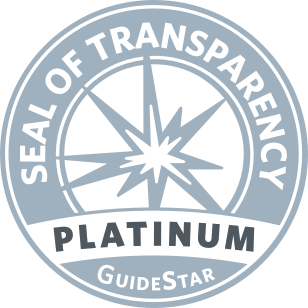
Best disease is an inherited retinal disease, which causes macular degeneration and loss of central vision, visual acuity, and color perception.
What is Best Disease?
Best disease, also known as vitelliform macular dystrophy, is an inherited retinal disease causing macular degeneration. The retina is a thin piece of tissue lining the back of the eye. Rod and cone photoreceptors in the retina convert light into electrical signals that the brain interprets as vision. Best disease affects the macula, the central part of the retina, and is characterized by loss of central vision, as well as the ability to perceive colors and details.
Symptoms
Although the age of onset for those with Best disease can vary, it is usually diagnosed during childhood or adolescence. In the initial stages, a bright yellow cyst (fluid-filled sac) forms under the retinal pigment epithelium (RPE) beneath the macula. The RPE is a layer of cells that provides support for photoreceptors.
Upon examination by an eye doctor, the cyst looks like a sunny-side-up egg. Despite the presence of the cyst, visual acuity may remain normal or near normal for many years. Peripheral (side) vision usually remains unaffected.
In many individuals with Best disease, the cyst eventually ruptures. Fluid and yellow deposits from the ruptured cyst spread throughout the macula. At this point the macula has a scrambled egg appearance. Once the cyst ruptures, the macula and the RPE begin to atrophy (degenerate) causing further vision loss.

Retinas affected by Best disease also have the accumulation of yellow flecks called lipofuscin, which can also cause vision loss.
In many people with Best disease, central vision deteriorates to about 20/100 later in life. However, the condition does not always affect both eyes equally. Many individuals retain useful central vision in one eye with a visual acuity of about 20/40 in the less-affected eye.
In some cases, Best disease does not progress far enough to cause significant central vision loss. However, retinal specialists can still detect the disease using sophisticated diagnostic tests that measure the function of the RPE and the retina.
How the Disease is Inherited
Mutations in the BEST1 (VMD2) gene cause Best disease. The condition is genetically passed through families by the autosomal dominant pattern of inheritance. In this pattern of inheritance, an affected person has one Best disease gene paired with one normal gene. When the affected person has children with an unaffected partner, there is a 50 percent chance that the affected parent will pass the disease-causing gene to each child.
The unaffected partner will only pass normal genes. A child who does not have the Best disease gene will not have the disease and cannot then pass the disease to his or her children.
Genetic counselors are excellent resources for discussing inheritability, family planning, genetic testing, and other related issues.

Living with Best Disease
There are many services and accommodative and assistive resources available to people and families with Best disease. Visit the Foundation’s Low Vision Resources page to learn about many of these resources. A low vision specialist can help recommend the resources that are right for you.
Genetic Testing
Genetic testing is available for Best disease. It helps confirm the diagnosis and the risk of passing the condition from parent to offspring. It also helps with attaining an accurate diagnosis. A patient with an accurate diagnosis is in a better position to understand which emerging treatment approaches and clinical trials are most appropriate for them.
Clinical Trials
View a list of current clinical trials, many made possible by Foundation support.
Best Disease page at www.ClinicalTrials.gov.
Resource Download
Download What You Should Know about Best Disease Infographic - 11x17
Download What You Should Know about Best Disease Infographic - 11x17 (PDF, 514 KB)
Next Section
Jump to Section
Latest News
-

Nov 14, 2025
Opus Genetics Launches Gene Therapy Clinical Trial for Best Disease
Research NewsThe Foundation funded preclinical studies for the approach and launched Opus.
-

Aug 22, 2025
Opus Genetics Receives FDA Clearance to Launch Clinical Trial for Best1 Gene Therapy
Research NewsThe Foundation funded earlier, proof-of-concept studies for the Best1 gene therapy and later launched Opus to develop several IRD gene therapies.
-

Oct 23, 2024
Opus Genetics, Ocuphire Merger to Boost Advancement of Several IRD Gene Therapies
Research NewsMerger will provide additional capital for gene therapy development.
-
Aug 21, 2020
Foundation Fighting Blindness Commits $6.5 Million for New Retinal Disease Research Grants
Foundation NewsNew grants include development of CRISPR/Cas9 gene-editing treatments, new disease models, and a retinal regeneration therapy
-

Mar 31, 2020
COVID-19 Resources
Foundation NewsThe Foundation Fighting Blindness is closely monitoring the COVID-19 situation and its impact on the IRD community.
-

Feb 6, 2020
ProQR Therapeutics Teams Up with the Foundation Fighting Blindness and Blueprint Genetics to Support the My Retina Tracker® Program for People Living with Inherited Retinal Diseases
Foundation NewsMy Retina Tracker Program is the highest volume IRD genetic testing program in the U.S.
-
Oct 2, 2019
Blueprint Genetics, InformedDNA and the Foundation Fighting Blindness launch an open access program for patients with inherited retinal disease in the United States
Foundation NewsThe program will offer patients with inherited retinal disease no-cost genetic testing and genetic counseling in the United States. Look for updated information on how to participate to be posted in mid-October, with program registration starting shortly thereafter.
-

May 9, 2019
Foundation Fighting Blindness Endorses 'Eye Bonds' Legislation
Foundation NewsBipartisan Bill Will Stimulate Up to $1 Billion in New Funding for Blindness Research
-

Jul 19, 2018
Foundation Fighting Blindness Urges Congress to Pass ‘Eye-Bonds’ Legislation
Foundation NewsBill Introduced in U.S. House Would Speed Up Cures for Blindness
-

Jun 8, 2018
Foundation Fighting Blindness and CheckedUp® Partner to Educate Retinal-Disease Patients About Research, Resources, and Emerging Therapies During Doctor Visits
Foundation NewsThe Foundation Fighting Blindness (the Foundation) and CheckedUp have formed a collaborative partnership to deliver patient-friendly diagnostic and disease-management information to people with retinal diseases such as age-related macular degeneration, retinitis pigmentosa, and Stargardt disease during their visits to eye doctors.





